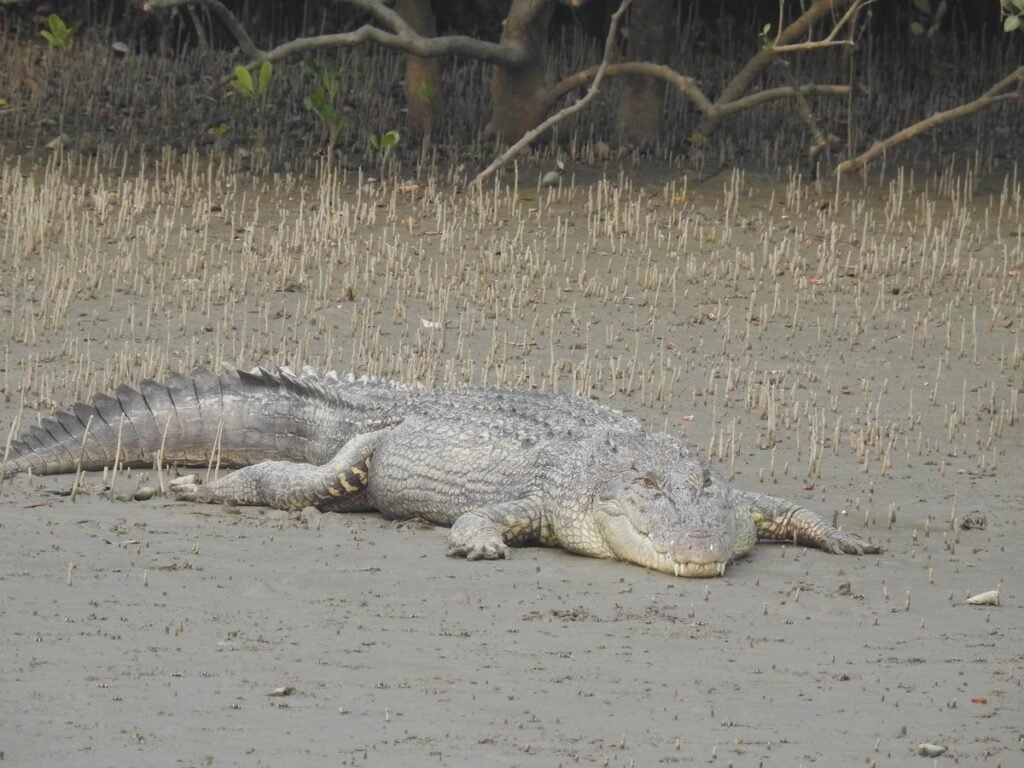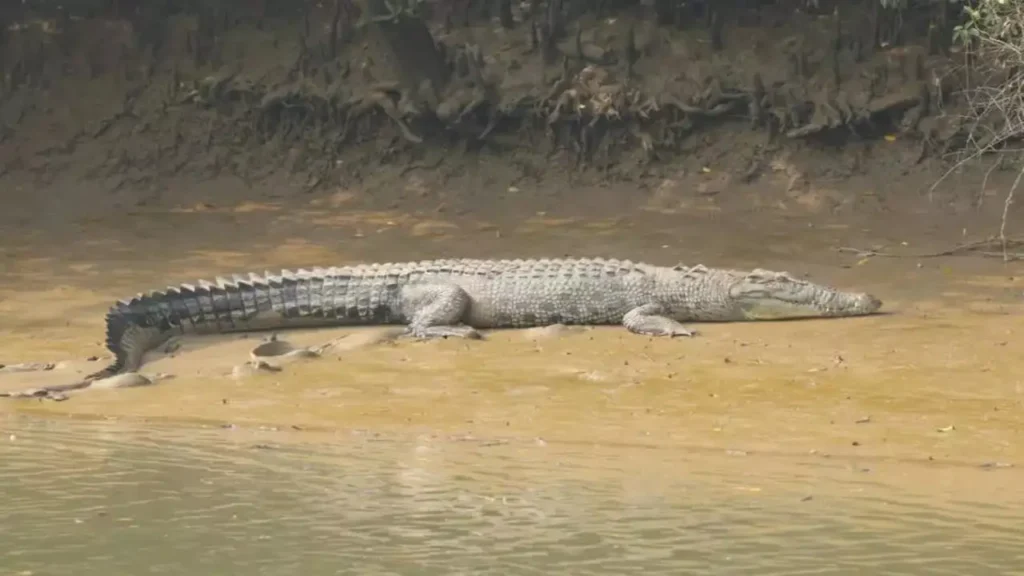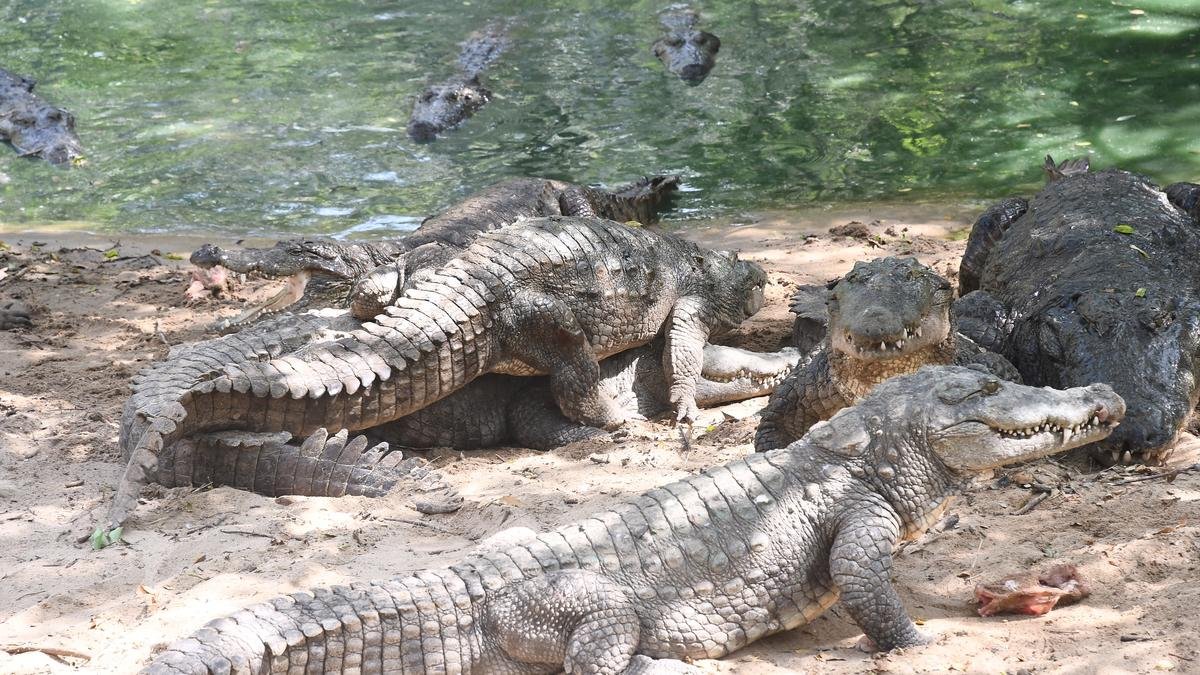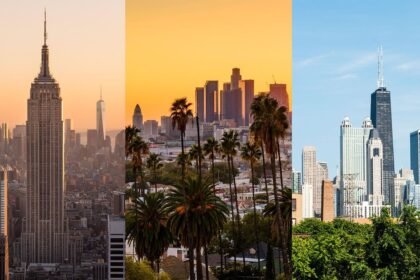A Historic Milestone in Odisha Crocodile Conservation

On the occasion of World Crocodile Day, the eastern Indian state of Odisha is celebrating a landmark achievement: 50 years of Odisha crocodile conservation. Since 1975, the state has led India’s reptilian protection efforts, with targeted initiatives focused on conserving saltwater crocodiles in Bhitarkanika, gharials in Satkosia, and muggers in Similipal. This comprehensive Odisha crocodile conservation program has made the state the only one in India to host and successfully protect all three native crocodilian species.
The Origins of the Odisha Crocodile Conservation Program
The journey began in 1975 with three targeted initiatives:
- Saltwater Crocodiles (Crocodylus porosus) in Bhitarkanika mangroves
- Gharials (Gavialis gangeticus) in Satkosia gorge of the Mahanadi River
- Muggers (Crocodylus palustris) in Similipal National Park and surrounding rivers
These efforts were designed to restore and stabilize declining crocodile populations and were supported through captive breeding, habitat restoration, and scientific monitoring.
A Model Program Led by Experts
One of the defining moments in India’s wildlife conservation history was the introduction of saltwater crocodile breeding at Bhitarkanika. Led by eminent herpetologist Dr. Sudhakar Kar and supported by Australian expert H. R. Bustard, the project saw the establishment of a robust captive breeding system. The Bhitarkanika region, now a protected sanctuary, is India’s second-largest mangrove ecosystem and offers ideal conditions for these apex predators.
Today, thanks to continued efforts, Odisha’s crocodile populations stand at impressive numbers:
- Saltwater Crocodiles: 1,826 in Bhitarkanika
- Gharials: 16 in Satkosia Gorge
- Muggers: Approx. 300 across various rivers
Odisha Crocodile Conservation and Its Role in Reptilian Biodiversity
This 50-year journey highlights Odisha’s commitment to conserving biodiversity, especially in fragile ecosystems. Unlike other Indian states that may host one or two crocodile species, Odisha is unique in its inclusive conservation approach that spans three different habitats and species.

Dr. Prem Kumar Jha, the state’s Principal Chief Conservator of Forests, described the initiative as “one of India’s most successful wildlife conservation stories.”
Commemorating 50 Years of Odisha Crocodile Conservation
To honor this landmark achievement, Odisha’s forest and wildlife department has launched a week-long celebration involving a variety of public events:
- Seminars on crocodile biology and conservation
- Workshops for forest staff and local communities
- Photo exhibitions showcasing the 50-year journey
- School and college-level competitions to raise awareness
These activities are meant to inspire a new generation of conservationists and promote community engagement in wildlife preservation.
The Legacy of Conservation Pioneers
This golden jubilee pays tribute to pioneers like Dr. Sudhakar Kar, Dr. B. C. Choudhury, and L. A. Singh, whose vision and dedication laid the groundwork for what is now considered a national model in reptilian conservation. Their legacy lives on in the thriving populations and sustainable habitats that now define Odisha’s wildlife sanctuaries.
Bhitarkanika: A Living Laboratory of Saltwater Crocodile Conservation
Bhitarkanika National Park has evolved into a living laboratory, attracting researchers and wildlife enthusiasts from around the world. Spanning over 650 sq km, this biodiverse area is home to rich mangrove forests, migratory birds, reptiles, and amphibians.
Saltwater crocodiles are the park’s flagship species, and visitors can often spot them basking on riverbanks. The estuarine environment here not only supports crocodiles but also benefits the entire aquatic food web.
Satkosia Gorge: A Sanctuary for the Critically Endangered Gharial
Satkosia Wildlife Sanctuary, situated along the majestic Mahanadi River, serves as a critical habitat for the gharial, a long-snouted fish-eating crocodilian species. Gharials are critically endangered, and Odisha’s efforts have been crucial in preventing their local extinction.
Conservation programs include:
- Nest monitoring and protection during breeding season
- Community involvement in patrolling and reporting
- Riverbank restoration to promote nesting
Mugger Crocodiles in Similipal: Adapting to Riverine Ecosystems
The mugger crocodile, India’s most adaptable crocodilian species, thrives in Similipal National Park and other rivers across Odisha. Their presence in forested and semi-urban river systems highlights the balance between wildlife and human habitation.

The forest department actively monitors mugger populations and conducts regular awareness drives in nearby villages to mitigate conflict.
Confronting Modern Challenges: Human-Crocodile Conflict
While Odisha’s success in crocodile conservation is commendable, it is not without its challenges. Human-crocodile conflicts, particularly around Bhitarkanika, are becoming more frequent due to population growth and habitat overlap.
To address this, the state has implemented:
- Installation of barricades and fencing along vulnerable riverbanks
- Solar-powered warning systems in high-risk zones
- Education campaigns promoting safe river usage
Dr. Kar emphasized the need for coexistence strategies, saying, “Conservation is not just about protecting animals; it’s about balancing human and wildlife needs.”
Integrating Technology in Conservation Monitoring
Odisha is also embracing modern tools like drone surveillance, satellite tracking, and digital census systems to improve the accuracy and effectiveness of its conservation programs. These innovations allow for more precise monitoring of nesting sites, habitat changes, and crocodile movements.
Community Involvement: A Pillar of Conservation Success
A key reason for the initiative’s longevity has been the active participation of local communities. Residents near crocodile habitats are trained to report sightings, avoid nesting zones during breeding seasons, and participate in habitat restoration projects.

Several eco-development committees have been formed to integrate conservation with livelihood activities, such as eco-tourism, organic farming, and handicrafts.
Crocodile Conservation and Climate Resilience
Crocodiles are not just charismatic megafauna—they are indicators of ecological health. Their presence in Odisha’s wetlands signifies clean water and balanced ecosystems. As climate change continues to affect river flows and coastal mangroves, these reptiles play a vital role in stabilizing the food chain and maintaining biodiversity.
What the Future Holds
As Odisha reflects on 50 years of dedicated crocodile conservation, the state is also setting its sights on future goals:
- Expanding crocodile habitat zones
- Enhancing genetic diversity through scientific breeding
- Developing community-based eco-tourism around key sanctuaries
- Fostering international collaboration in reptile conservation
The golden jubilee is not merely a celebration—it’s a reaffirmation of Odisha’s commitment to protecting its unique reptilian heritage for generations to come.
A Blueprint for National and Global Replication
Odisha’s comprehensive approach to crocodile conservation—from captive breeding and community involvement to habitat protection and technological integration—serves as a blueprint for similar programs across India and the globe. With the combined effort of scientists, government agencies, and local communities, the future of these majestic reptiles looks promising.
In a world where biodiversity is under constant threat, Odisha’s 50-year crocodile conservation journey stands out as a shining example of what dedicated, science-backed, and community-driven initiatives can achieve.




